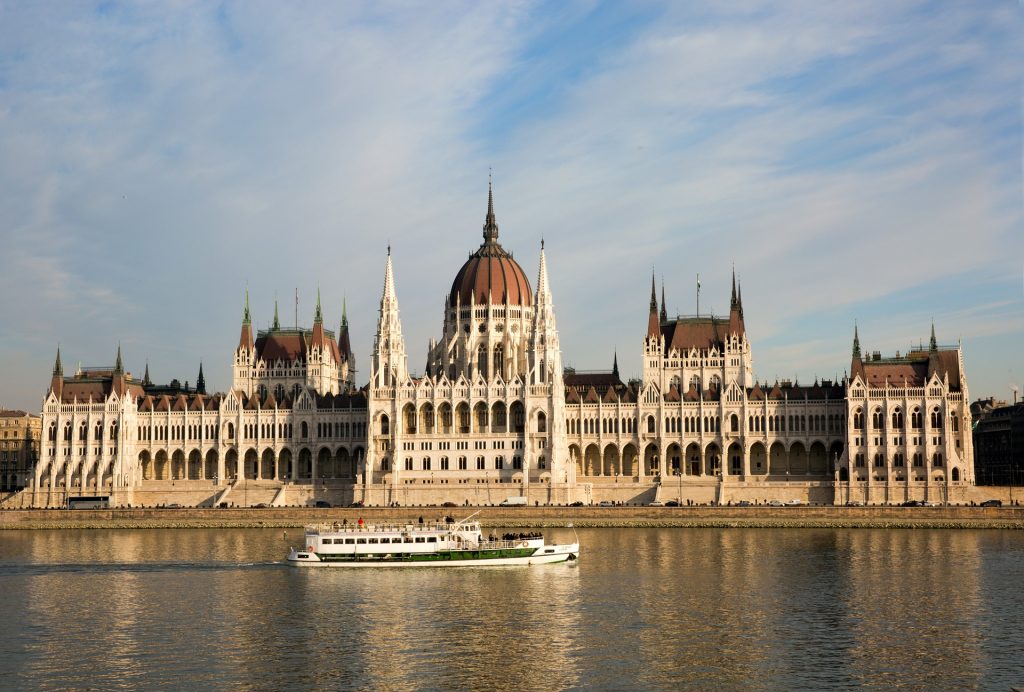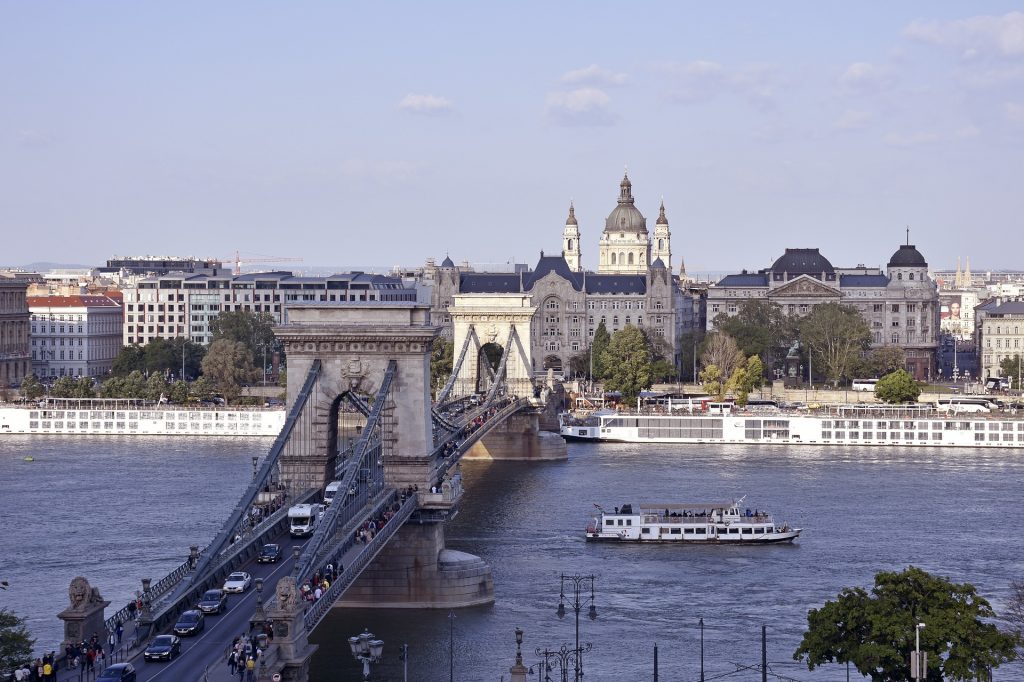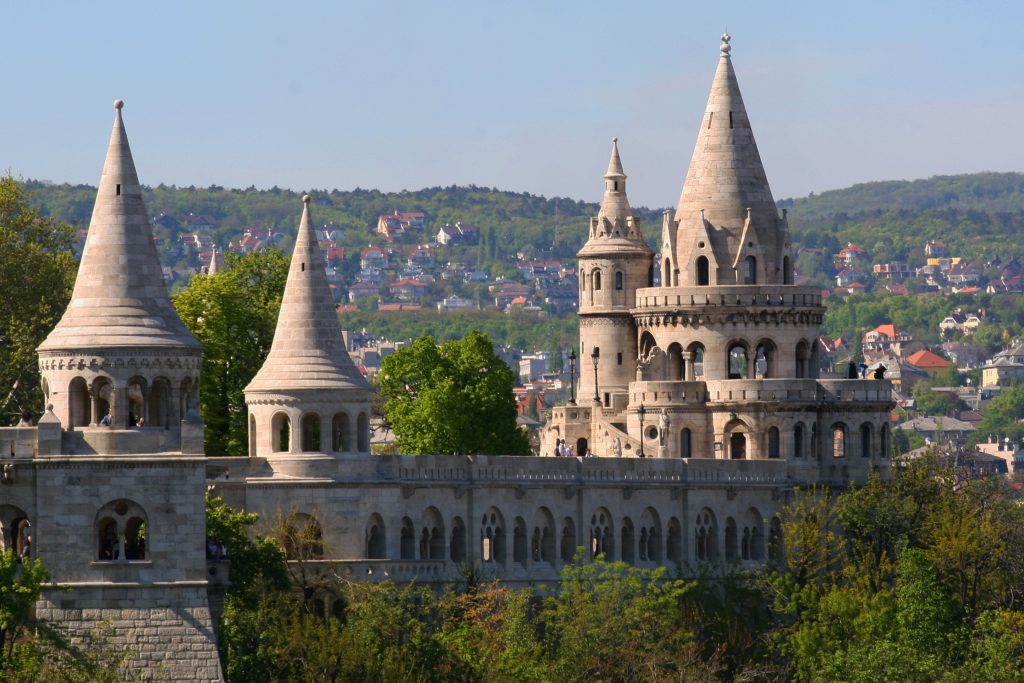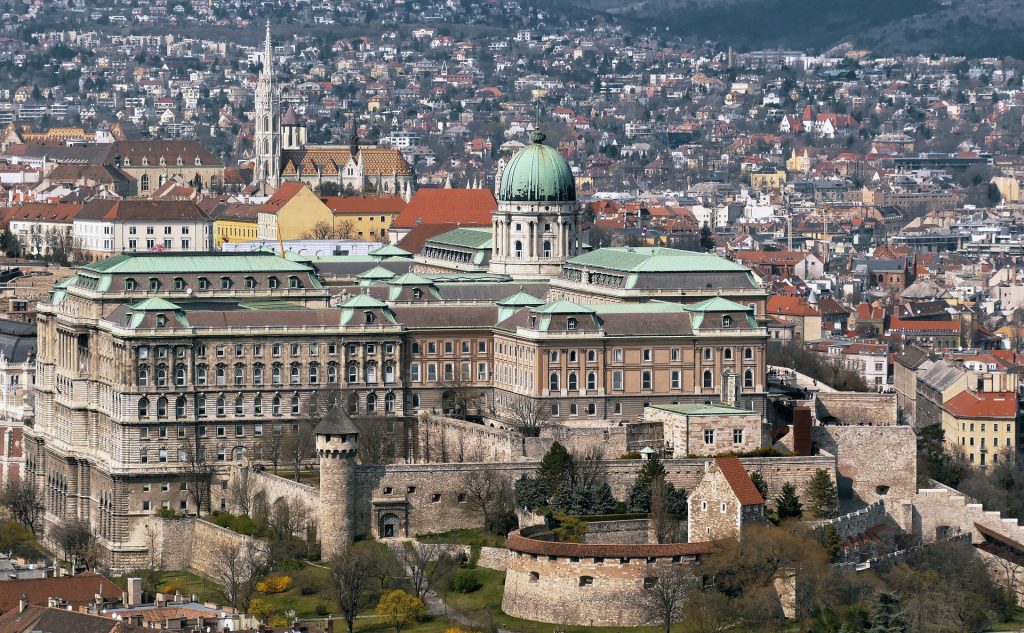Guia de viagem Budapeste

O que Budapeste tem de especial?
Fundada há mais de 1.000 anos, Budapeste é a maior cidade e capital da Hungria e é frequentemente descrita como a cidade mais excitante da Europa. A cidade não é uma das maiores em tamanho, mas tem sempre muito a oferecer aos hóspedes que procuram um fim de semana, ou uma longa estadia.
A cidade atrai turistas do mundo inteiro desde 895 dC, e sua beleza atraiu algumas das figuras mais influentes de todas as esferas da vida, incluindo políticos, artistas, historiadores, jornalistas e socialites. Além disso, Budapeste é uma cidade que oferece aos turistas uma vista deslumbrante, ótima comida, bebidas e cultura autênticas.
Quais pontos turísticos visitar?
Budapeste oferece aos visitantes atrações muito únicas e difíceis de serem encontradas em outro lugar. Sua história, cultura, arquitetura e culinária únicas superam muitas cidades europeias maiores, cativando milhares de turistas a conhecer e desfrutar de seus costumes. A cidade em si é um ótimo destino para se visitar, seja de férias ou em alguma viagem de negócios.
A localização estratégica de Budapeste atrai turistas de todo o mundo para ter sua experiência de viagem em uma parada. Uma vez que a cidade oferece atrações incríveis que valem a pena visitar, como Castle Hill & Fishermen’s Bastion, onde você pode ver belas vistas da cidade e desfrutar de um jantar incrível em um restaurante de primeira, ou uma noite em um cruzeiro de barco pelo rio Danúbio.
Parlamento de Budapeste

O Parlamento de Budapeste, é um edifício de extrema importância nacional e um dos marcos mais conhecidos da Hungria. O local foi inaugurado em 1904, e projetado por Imre Steindl.
Ponte Széchenyi Lánchíd

Inaugurada em 1849, a Ponte Széchenyi foi a primeira ponte a ser construída sobre o Rio Danúbio, e é a quarta ponte que atravessa o rio em Budapeste.
Bastião dos Pescadores

O Bastião dos Pescadores é um edifício enorme que serviu como mercado de peixe durante séculos, mas foi transformado em uma das atrações mais populares de Budapeste desde a sua renovação. O local está situado no centro de Budapeste, próximo ao Palácio Gresham, atrás da Praça dos Heróis.
Praça dos Heróis

A Praça dos Heróis é uma praça central no coração de Budapeste onde os visitantes podem ver algumas das esculturas, monumentos e memoriais mais históricos da cidade. A praça é popular entre os turistas que se aglomeram na cidade para jogos de futebol ou outros eventos esportivos.
Castelo de Buda

O Castelo de Buda é o marco mais importante de Budapeste, sendo considerado Patrimônio da Humanidade e uma das atrações turísticas mais populares da cidade. Além disso, o castelo é um exemplo arquetípico de fortaleza medieval, e já foi o lar da realeza no século X.
Onde se hospedar em Budapeste?
Budapeste é um dos destinos turísticos mais populares da Europa, mas não é um lugar apenas para viajantes médios, pois o local tem uma história muito rica e complexa, por isso os visitantes devem explorar alguns desses aspectos e desfrutar de sua vibrante vida noturna e da cultura. Budapeste é uma cidade incrível que oferece muitos lugares ótimos para ficar, mas alguns deles se destacam por serem melhores que outros, dependendo do tipo de viajante que você é.
No entanto, sua cultura rica não é a única razão pela qual a cidade se tornou um destino popular entre os viajantes, pois sua beleza é uma das mais atraentes da Europa e do mundo.
A seguir, veja algumas das melhores regiões e bairros para se hospedar em Budapeste:
Erzsébetváros
O distrito de Erzsébetváros é um destino turístico bastante popular na Hungria, pois é o lar de edifícios de renome mundial, como a Casa do Terror, a Ópera Estatal Húngara e do Millenáris. No entanto, a região foi originalmente chamada de Vigadó, que significa “farol”, que é um nome dado para os fogos de sinalização de longa distância da cidade que iluminaram a área durante o domínio austro-húngaro.
O distrito é habitado desde os tempos medievais e tem suas raízes na época turca, expandindo o número de habitantes apenas no século XIX, quando se tornou o lar de muitas indústrias e empresários vindos da Galiza e da Bucovina.
Belváros-Lipótváros
Belváros-Lipótváros, ou simplesmente o centro da cidade, é um dos lugares mais visitados pelos turistas em Budapeste, pois a região abriga muitos hotéis, pousadas, shoppings como GÖDŐ e uma série de outras atrações.
No entanto, a região de Belváros-Lipótváros tem um significado histórico e único para a cidade, pois os primeiros moradores começaram a se estabelecer aqui no século 18. Em 1873, o local foi proclamado distrito de Buda com o nome de “Belváros”, e em 1979 foi renomeado com o antigo nome “Lipótváros”. A área central é caracterizada por suas ruas largas e edifícios coloridos que refletem sua rica história e longa tradição em arte e cultura.
Terézváros
Terezváros é um bairro vibrante e culturalmente diversificado de Budapeste, e foi o último a ser construído após uma breve interrupção pela guerra e revolução. A região apresenta uma mistura interessante de estilos arquitetônicos, e está localizada no coração da cidade.
No entanto, a área se tornou um destino turístico popular principalmente devido à sua rica história, acesso conveniente e variedade de ofertas. A história de Terezváros é como a de muitas outras partes da cidade, principalmente de perdas trágicas, primeiro houve o cerco turco, depois houve o grande incêndio em 1871. O número de mortos poderia ter sido impressionante se não fosse por Carlos III, que deu ordens para uma evacuação de emergência e salvou centenas, senão milhares de vidas.
Jószefváros
Jószefváros é o 8º maior distrito de Budapeste, e abriga algumas atrações bem interessantes, como o Parque da Cidade e a Sala de Concertos do Vigadó. Além disso, a região também é o lar de muitos cafés, restaurantes e galerias à beira do Rio Danúbio, e conta com uma história que remonta à época romana, quando ainda era conhecido como Isidorfort, nome que significa “A Vila de Ísis” em húngaro.
Atualmente, Jószefváros oferece muitas coisas para os turistas fazerem, além de restaurantes com cozinhas deliciosas e uma grande variedade de bebidas e petiscos locais, também existem muitos museus, como o Museu de Tecidos Zsolnay ou a Peggy Guggenheim Collection House.
Ferencváros
Ferencváros foi caracterizado como um dos bairros mais atraentes de Budapeste, principalmente por conta de sua rica história e arquitetura impressionante. No entanto, como parte do cinturão verde da cidade, o local também é popular entre os amantes da natureza, pois apresenta uma abundância de ruas arborizadas, parques e fontes.
Ferencváros tem muito a oferecer em termos de entretenimento, compras e atividades culturais, pois conta com muitas opções culinárias para se escolher e desfrutar. Além disso, a economia de Ferencváros é impulsionada principalmente pela indústria de acolhimento, que é tradicionalmente um dos setores mais dinâmicos da economia húngara.